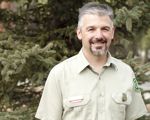 There is no question that forest fires can leave devastation and great economic loss after they are extinguished. Last year’s fires near Flagstaff cost taxpayers millions of dollars, and the aftermath caused a significant amount of flooding near Doney Park.
There is no question that forest fires can leave devastation and great economic loss after they are extinguished. Last year’s fires near Flagstaff cost taxpayers millions of dollars, and the aftermath caused a significant amount of flooding near Doney Park.
That is why several community leaders, environmentalists, scientists, and state forest service officials are hammering out a forest restoration initiative that outlines a strategy to protect 2.4 million acres of ponderosa pine forests in Northern Arizona.
The Four Forest Restoration Initiative (4RI) stakeholders group’s proposal is now available for public comment. The stakeholders have been working on an agreement for several years, looking for strategies to make the forests healthier. The current draft proposal can be viewed online at www.fs.usda.gov/goto/kaibab/4fri under “documents.”
The public and all interested parties may offer input on the plan until a final draft is written in April 2012.
Henry Provencio with the Coconino National Forest says that the goal is to restore the viability, resilience and productivity of the forest. Supporters of the cause have several ideas to protect the forest stretching across the Kaibab, Coconino, Apache-Sitgreaves and Tonto National Forests.
Those ideas include, but are not limited to, mechanically thinning the trees, controlled burns, researching the best locations for road creation, preventing soil erosion, and protecting wildlife and its habitat.
“We’re targeting all size classes of trees. We want to make a more open forest. It may include methods using low intensity fires to burn out sections of trees and make gaps in the forest possibly every 10 acres. Our forests are really unhealthy and are having trouble withstanding fires, bugs and climate change,” Provencio said.
“Forest fires cause so much devastation. There is the tree loss, loss of topsoil, causing massive erosion and flooding. That soil is carried down to streams and kills species within the stream. Fire is only part of the issue,” he added.
Paul Summerfelt, city of Flagstaff fire management officer, is a member of the 4FRI and the Greater Flagstaff Forests Partnership. He says that action stemming from the proposed initiative and final plan will offer residents in Northern Arizona more protection from destructive fires.
“When we talk about preventative work, it makes sense to look at the quality of life perspective. People move here and expect to get clean drinking water and protection from fires. They don’t want to evacuate in the middle of the night to escape a fire,” Summerfelt said.
He added that it is up to a large group of interested parties to collaborate on creating the best plan for everyone. “It’s not a single jurisdiction’s responsibility. The forest health doesn’t respect fence lines.”
“Historically, the forest burned between every three to 15 years. For the last century, fire has been largely excluded, but now small trees in the forest have created a health and safety problem. Both problems are exacerbated by climate change,” Chris Knopp, forest supervisor with the Apache-Sitgreaves National Forest, said.
Knopp knows firsthand about how devastating a fire can be. In 2002, the Rodeo-Chediski Fire near Show Low burned more than 480,000 acres of ponderosa pine forests. “That was a consequence of the exclusion of fire in that area, so we want to remove some of the trees and restore the ecology to the area. Any kind of treatment for 2.4 million acres is unprecedented. And a treatment of this magnitude can’t continue without the support of and collaboration with the public,” he added.
Additionally, Provencio added that there are a few companies who are considering removing cut trees from the forest after they are thinned. The trees would be used for various projects. He said those companies would be responsible for paying for all of the costs they incur when they remove the trees. FBN





